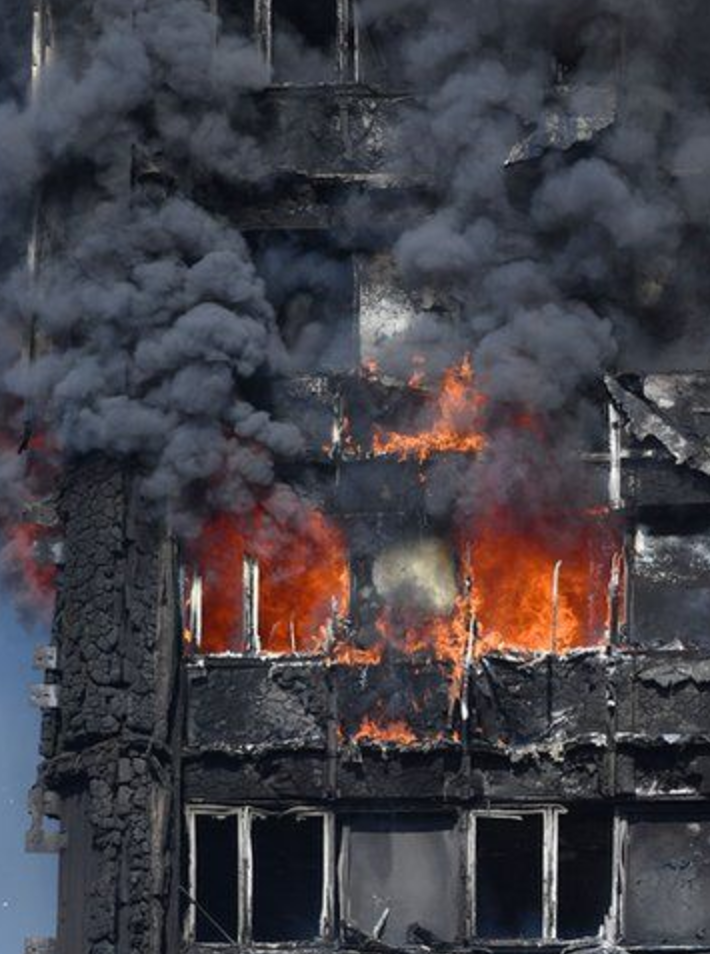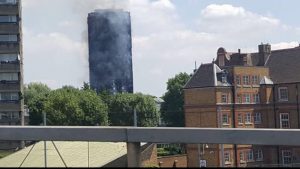
Grenfell Tower disaster: How the fire began rapidly spread in a flash

The Grenfell Tower disaster in West London is the worst fire the UK has witnessed, as the investigators and working to find out how the blaze began and spread rapidly and also are looking into the construction, refurbishment and the management of the Tower block, as well as the existing building regulations, are adequate. The tower block had an £10m refurbishment last year, which helped the rapid spread of the fire.
“ It appears the external cladding has significantly contributed to the spread of the fire” DR Angus Law of the BRE Centre for Fire Safety Engineering at the University of Edinburgh.
It appears fire spread inside the building quickly, without any warning and something went horribly wrong inside the building. High-rise tower blocks are designed to keep a fire contained in that flat where it started and keep the stairway escape route protected.
Christopher Miers, a forensic architect who specialises in assessing causes of fires, at Probyn Miers said “ Contractors on the Grenfell Tower project used aluminium composite panels with polyethylene core, manufactured under the brand name Reynobond are believed to have been fitted to the outside of the Grenfell tower by Harely Facades, a small family firm subcontracted as part of the refurbishment. Reynobond makes three types of panels on with a flammable plastic core and two with fire-resistant cores. It is thought the contractors chose the cheaper more combustible version for Grenfell. The space behind the external cladding 25mm to 50mm has been shown in the past to act as a “Chimney” acting as catalyst to conduct flames rapidly up a building. As part of the refurbishment contractor Rydon, fitted smoke extract and ventilation system. But it is not clear if this functioned properly. Since 2007, all new buildings over 30 meters are required to have water sprinkler systems installed. In addition, UK regulations require barriers to be erected as fire stops at intervals to compartmentalise the building. Under currently health and safety guidance, standard advice to residents of many tower blocks is to “stay put” and evacuate only if the fire is within their own apartment. This is based on the assumption that the building design will keep residents protected from smoke and fire for 60 minutes, and prevents unnecessary commotion of the evacuation that could block the stairway and stop the fire brigade having access.
The government said on Wednesday it had written to all councils encouraging them to retrofit sprinkler systems.
The melting point of Aluminium is 600ᵒC and while of steel is 2000ᵒC.
Kensington and Chelsea Tenant management Organisation which manages over 9,400 properties, have criticised about their fire safety standards.
Lack of notices and fire escape plans explaining tenants what to do in the event of a fire, rubbish blocking the escape staircase and concerns over where boiler and gas pipes were placed.
A salesman for the US based Reynobond told this version of Polyethylene core known as PE used in Grenfell Tower, was banned in American buildings taller than 40 feet (12.2metres for fire safety reasons. The FR variant is fire –resistant by the PE is just plastic.
Eyewitnesses said the fire started on the fourth floor of the 24-storey building, an electrical fault on a fridge.
